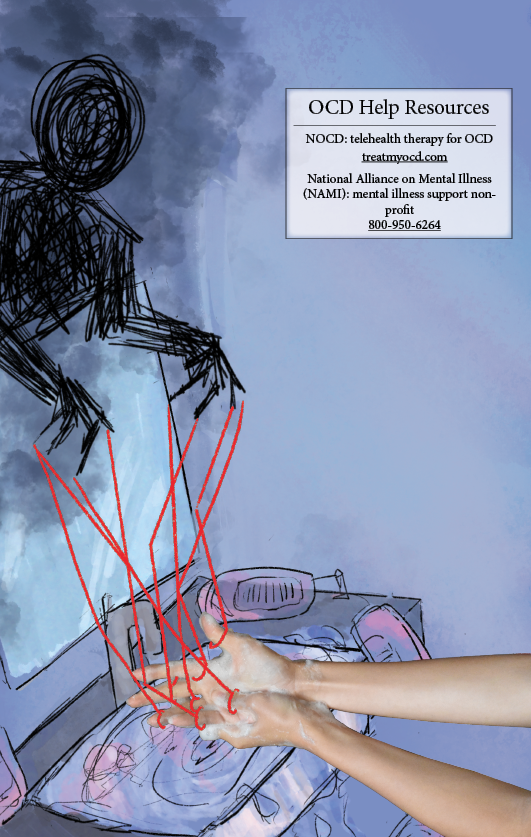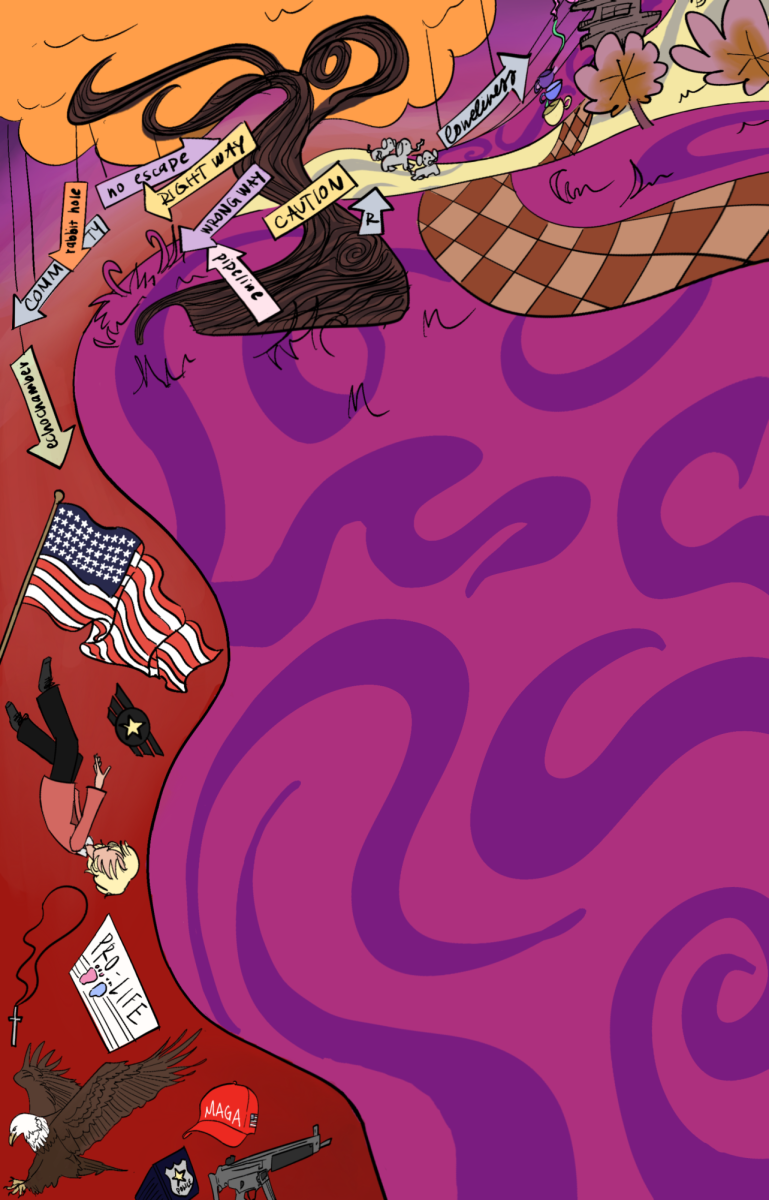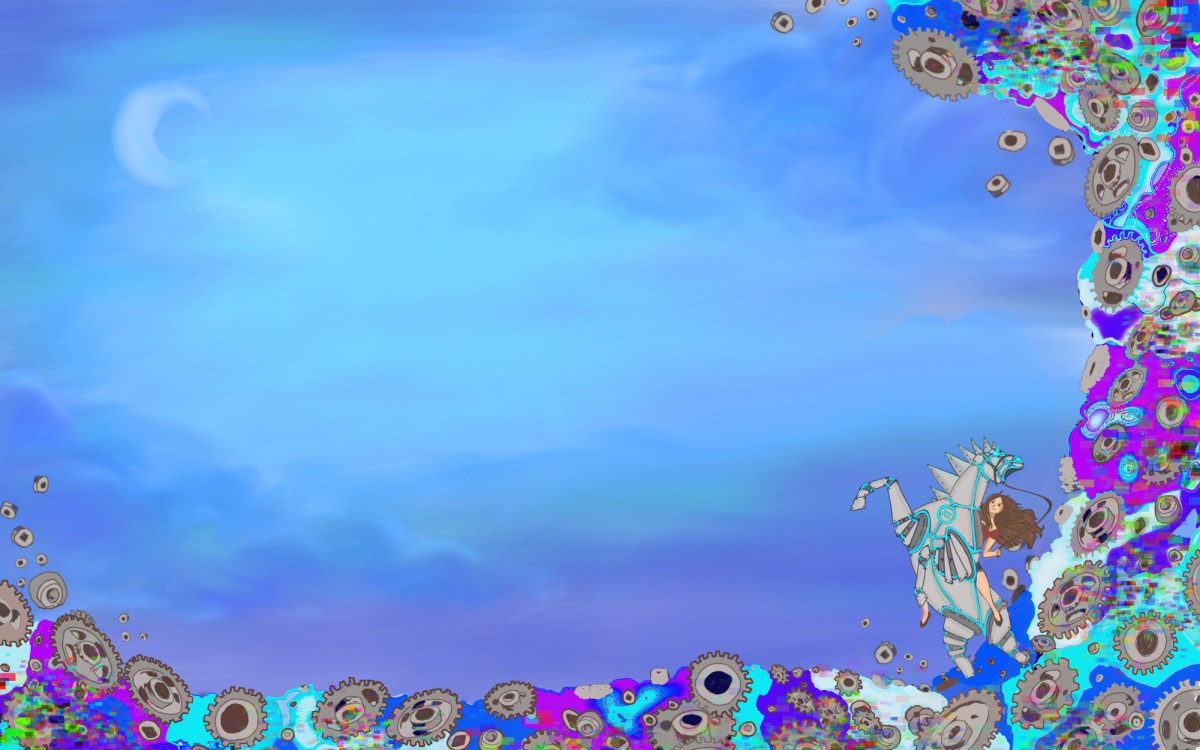Coming home from school junior year, Allison Hauw (12) couldn’t bring herself to step into her bedroom.
She couldn’t bear to.
As the fear of infecting her clean, safe room with the germs she’d amassed from the outside world crept up on her, she chose to sit down and complete her homework on the staircase — a place Hauw classified as “dirty.” That way, the “clean” would remain clean and the “dirty” would remain dirty, distinctly separated from one another, never to overlap.
For Hauw, many days are like this: choosing the discomfort of working and sometimes even sleeping on the stiff, uncomfortable stairs over the seemingly greater discomfort of knowing that she’d brought germs into her safe spaces.
“[This fear] has led to me sleeping at odd places and very bad habits or schedules,” Hauw said. “I feel like I can’t shower until I finish all my homework because I have to touch my [dirty] school books and things like that. If a dirty thing touches a clean thing in my mind, it just makes me feel really anxious and the thought doesn’t go away until I clean that thing or I clean both things. I feel like it’s just affected my daily life.”
Contamination type Obsessive Compulsive Disorder (OCD) is a subtype of OCD that is characterized by intrusive thoughts of being contaminated or contaminating others.
According to Staff Psychologist at the Center for Anxiety & Behavior Therapy Dr. Catherine Schuler, the appearance of Contamination OCD is often sparked by a major, triggering event, such as a pandemic or a close friend getting sick.
“The theme of somebody’s OCD often has to do with their life experiences,” Dr. Schuler said. “It doesn’t matter what time period it is. The COVID pandemic was a really challenging time for people. There are people who had OCD, but not the contamination version of OCD. The COVID pandemic might have brought up some contamination themes for them.”
Hauw started to show symptoms of contamination OCD in 7th grade when the COVID-19 pandemic hit.
“I was obsessed with just cleaning all surfaces,” Hauw said. “Any time I went outside, I would clean [them] with wipes. I went through wipes really quickly and I still do.”
According to Hauw, those obsessive thoughts have only gotten worse with time.
“I know there’s nothing there but it’s just my arm feels different, it just doesn’t feel like part of my body until I clean it,” Hauw said. “It’s a constant thing on my mind and it takes up a lot of my time. It’s hard to talk to people [about it] because I don’t wanna bring down the mood by talking about how stressed it makes me feel. [It’s] isolating.”
For Aiden Tran (12), behaviors like these started in late elementary school, around 4th grade, unprovoked by a major event.
“I was just freaked out by getting sick, which is why I always was using hand sanitizer,” Tran said. “I don’t think there’s a particular reason [I disliked germs]. Just being sick was always gross — didn’t want that to happen. I tried to keep myself clean.”
To keep himself safe, Tran would always make sure to have a bottle of hand sanitizer on him, wipe down his tables and chairs, distance himself from his classmates to avoid getting contaminated, and shower right after getting home.
“[When there were germs on me], I felt very anxious and it felt like there was something on my hands or touching me and I could feel it,” Tran said. “It’s like phantom pain. I felt like it was there even though you can’t see it or anything. But it felt like it was almost weighing me down and I was very anxious about it.”
According to April Kilduff, a therapist who specializes in the treatment of OCD, these obsessive actions and thoughts are common among those with contamination OCD.
“One of the things that OCD really likes to target is uncertainty,” Kilduff said. “With contamination OCD, there’s uncertainties [such as] ‘Am I going to get sick?’ ‘Am I gonna get someone else sick?’ and OCD picks on those kinds of things where there just can’t really ever be certain, so you just spin in a loop with it.”
For Hauw, these invasive thoughts have consumed her daily life, particularly at home, where they frequently overwhelm her mind.
“I feel like it’s something that is on my mind more than it should be,” Hauw said. “It negatively affects my life because the constant cleaning just always fills my mind. I don’t get good sleep. It’s just hard to deal with sometimes when you’re also juggling school and the stress makes it worse.”
According to Hauw, there are misconceptions about what OCD, particularly contamination OCD, is truly like.
“In the media too, with contamination OCD, people think, ‘Oh they’re very type A,’ ‘They’re very organized,’ ‘They’re very clean,’” Hauw said. “But I feel in my case, it’s honestly made my spaces and my house a lot messier than normal houses because certain areas in my house are the dirty places where all the dirty stuff is, and all the clean stuff goes in a different area. Just the portrayal of [OCD made it] hard for me to understand my condition because that was the only way it was portrayed in [the] media — that it was all about organization and neatness where it’s kind of glorified.”
Tran didn’t realize that his obsessive cleaning was irregular until talking with a friend about it.
“It was her and me that realized I don’t like germs,” Tran said. “I never really classified it as a germaphobe thing or an OCD thing. [By] the point that I realized that it was germaphobia, I [had] moved on from it already.”
Kilduff said that patients not realizing that their daily actions are irregular until discussing it with another person has been a recurring theme.
“I think people have very stereotypical views of [contamination OCD] and they don’t realize how many different things it could be about,” Kilduff said. “Some people don’t understand that you can’t just stop doing compulsions and so they might not take it seriously as a real disorder. There’s some [cases] that get misdiagnosed as just general anxiety. If you’re not a therapist who’s educated in OCD and what to look for, then you can miss those nuances.”
Of the cases that do get correctly identified, around 40% of them get resolved by adulthood, according to Harvard Medical School.
Dr. Schuler attributes this high percentage to the very tangible ways to help treat contamination OCD.
“The treatment we have for it is really good,” Dr. Schuler said. “It’s called exposure and response prevention (ERP) and it’s just very tangible. Other mental health disorders, let’s say depression, is a little bit harder to treat because it is very unique to each person.”
ERP involves getting patients used to contaminating themselves and other items.
“I’ll have them grab their phone, which a lot of people think of as really dirty because it goes everywhere,” Dr. Schuler said. “I’ll have them contaminate their hands up with the phone, maybe rub it around their face, even lick their phone; do things to really contaminate themselves and then they have to sit with that and not do any sort of compulsions and they can tangibly see, ‘Oh, I didn’t get sick,’ ‘I didn’t die from doing that’ and they do that repeatedly. I have them do it with me first and then they do it on their own every day until the next session. There’s just a real tangibility about it they can see.”
Although Hauw has yet to take steps in managing her OCD, she said she finds comfort in being able to talk about her struggles with her sister who also has OCD.
“I feel like I can relate with my sister [who] has diagnosed OCD, on a lot of things,” Hauw said. “It definitely has helped having someone to talk to. I know therapy would be helpful, but it’s hard to seek out help when you’re overwhelmed by a lot of things. I just wish I didn’t have that anxiety or fear around it because it wouldn’t affect my life so much.”
Tran was able to mitigate his fear of germs by forcing himself to interact with his surroundings more. As he grew older, time also helped.
“I just tried to stop thinking about it as much,” Tran said. “Even if I didn’t think [my chair] was that clean, I would sit there anyways. I thought, ‘I need to get over it’ and [told myself] it’s not that big of a deal [because] I can just shower afterwards.”
According to Kilduff, this is similar to one of the major techniques used in the therapy to overcome OCD.
“I think one of the good things about OCD being so stereotyped and about germs is that people were actually able to recognize it a little bit more,” Kilduff said. “Then, hopefully [they’ll] go on to be able to treat it. Ultimately, if they have this kind of OCD [we want them] to not take it so seriously and to engage with the world the way someone who doesn’t have contamination OCD would.”
Though still frequently equipped with a travel sized hand sanitizer bottle, Tran has found himself taking the initiative to socialize and go outside more.
“It takes courage to take that step to try and get better,” Tran said. “I feel very accomplished now that I have accepted and overcome [my fears].”








